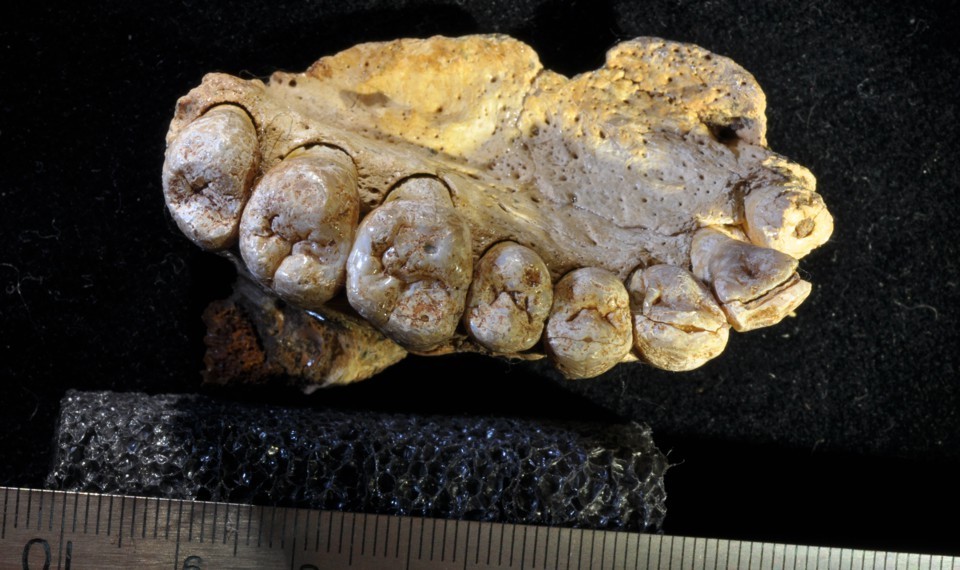
Archaeologists discover the oldest ever footprints of humans in North America
A new study has revealed that modern humans entered America much earlier that it was previously thought. The researchers of the latest study claim that they have got hold of the oldest human footprints in North America. The footprints were found out to be 13,000 years old. The scientists saw a total of 29 footprints on the shoreline of the Calvert Island in Canada. The island is situated to the north of Vancouver.
Further analysis revealed that the footprints were most probably made by two barefoot adults and a small child. They left the footprints in the wet clay near the edge of the water on the Calvert Island. The researchers said that the footprints were oldest ever to be found in North America. Michael Petraglia, an archaeologist, said that the age of the site is remarkable and suggests about an early entrance into the Americas. The archeologists were completely astonished to see how well-preserved the human footprints were. The scientists measured the sizes of the feet and found out that the child had a junior size 1, the adult woman foot had a size 3 and adult man had size 7.
Lead author of the study, Duncan McLaren, an anthropologist at the Hakai Institute and the University of Victoria in British Columbia said that the new find provides proof that the humans were inhabiting the North American region at the end of the last ice age. “It is possible that the coast was one of the means by which people entered the Americas at the time,” said McLaren.
The footprints were discovered during an excavation work that took place from 2014 to 2016. The study of these footprints revealed that humans were present on the Pacific coast of British Columbia about 13,000 years ago and that the region was devoid of ice cover well before the end of the last ice age that took place about 11,700 years ago. Kevin Hatala, an assistant professor of biology at Chatham University, said, “Ultimately, the data seem to show indisputable evidence of human presence along the Pacific Coast of Canada.” He further said that the latest footprint human footprint study is important because it is very rare to find archeological sites from this time and place. Currently, the Calvert Island is completely covered with forests and can only be reached by boat.
As per Wikipedia, The continents of North and South America were settled by Upper Paleolithic hunter-gatherers from North Asia between 20,000 and 10,000 years ago, by way of the Beringia land bridge which had formed between northeastern Siberia and western Alaska due to the lowering of sea level during the Last Glacial Maximum. The earliest populations in the Americas, between roughly 20,000 and 10,000 years ago are also known as Paleo-Indians.
Advances in archaeology, Pleistocene geology, physical anthropology, and DNA analysis have shed progressively more light on the subject; however, significant questions remain unresolved. While there is general agreement that the Americas were first settled from Asia, the pattern of migration, its timing, and the place(s) of origin in Asia of the peoples who migrated to the Americas remain unclear. Specifically, “Clovis first” refers to the hypothesis that the Clovis culture represents the earliest human presence in the Americas, beginning about 13,000 years ago; evidence of pre-Clovis cultures has accumulated during the 2000s to 2010s, pushing back the date of the first peopling of the Americas to about 16,000 years, or possibly close to 20,000 years ago.
There is general agreement among anthropologists that the source populations for the migration into the Americas originated from an area somewhere east of the Yenisei River. The common occurrence of the mtDNA Haplogroups A, B, C, and D among eastern Asian and Native American populations has long been recognized, along with the presence of Haplogroup X. As a whole, the greatest frequency of the four Native American associated haplogroups occurs in the Altai-Baikal region of southern Siberia. Some subclades of C and D closer to the Native American subclades occur among Mongolian, Amur, Japanese, Korean, and Ainu populations
The development of high-resolution genomic analysis has provided opportunities to further define Native American subclades and narrow the range of Asian subclades that may be parent or sister subclades. For example, the broad geographic range of Haplogroup X has been interpreted as allowing the possibility of a western Eurasian, or even a European source population for Native Americans, as in the Solutrean hypothesis, or suggesting a pre-Last Glacial Maximum migration into the Americas. The analysis of an ancient variant of Haplogroup X among aboriginals of the Altai region indicates common ancestry with the European strain rather than descent from the European strain. Further division of X subclades has allowed identification of Subhaplogroup X2a, which is regarded as specific to Native Americans. With further definition of subclades related to Native American populations, the requirements for sampling Asian populations to find the most closely related subclades grow more specific. Subhaplogroups D1 and D4h3 have been regarded as Native American specific based on their absence among a large sampling of populations regarded as potential descendants of source populations, over a wide area of Asia.Among the 3764 samples, the Sakhalin – lower Amur region was represented by 61 Oroks.


